Mini Rogue, the minimalist dungeon crawler designed by Paolo di Stefano and Gabriel Gendron, and published by Nuts! Publishing, was successfully funded on Kickstarter in June 2020 and will soon be in stores, distributed worldwide by Ares Games. The game takes seconds to set up and makes for quick, tense dungeon romps. One or two players delve into a deep dungeon to get a mysterious ruby called the Og's Blood.
Paolo di Stefano is a creative coder harking back to the old Flash experiential days and evolved into an interface developer with just over 13 years of experience, 8 of them in the video game industry. Gabriel Gendron is a game designer and UI/UX designer by trade with more than 10 years of experience, most notably in the video game industry. They teamed up to found Mountain Gold Games, and Mini Rogue was born out of their shared love for everything dungeon, CRPGs, boardgames, and a host of other common interests in music, food, and art. Their first published design, Mini Rogue 9-Card Print and Play, has been awarded multiple awards in the BGG contest community. In this article, originally posted on Kickstarter along the crowdfunding campaign in two parts, the game designer Paolo di Stefano tells of the genesis of the game.
I've browsed my photos to find the earliest picture of Mini Rogue. I knew I took a picture to send to Gabriel to discuss, and I figured it would be something nice to look at. Maybe there would be some foreshadowing of the game that would be.
These are Neapolitan cards. I know the four cards on the bottom are the player's stats: 5 defense, 6 HP, 5 gold, and 5 swords. The four arrows above it are enemies, with their own stats. But I have no memory of how the fights were resolved or anything else. Wow. It's been a long time. Actually, this isn't Mini Rogue yet, this is "Paolo plays with Neapolitan cards and tries to come up with something". Mini Rogue started much, much earlier than that:
You might be wondering "why Neapolitan cards?", and that is a good question. As you can guess by my name, my parents are Italian, and even if they weren't exactly into card games, they did know Scopa, and so we had a Neapolitan deck of cards at home. When I was young, both my older siblings (some of the most imaginative and funny people I know) used to take the deck and tell a story with it. They would pick a card and weave a story: "You are walking into the forest and find 3 coins", they'd pick another card: "but an armed horseman bandit crosses your path, and...", pick another card: "beats you 5 times!"...
I was A-MA-ZED by the storytelling. My siblings would just invent something out of inanimate cards. At that age, I didn't care about the quality of the storytelling, I was just entranced by the sheer genius of creating something out of almost nothing and being moved by it. And have you seen these cards? Can you see the ADVENTURE? The swords, the coins, the cups, the clubs... There are even people wielding them!
So, for all these years, I've seen these cards as more than meets the eye. There is still something about them, a trove of memories and possibilities. Repeating the experience of chaining the cards one after the other is at the same time predictable and surprising: there are only so many possibilities, but how you interpret them are unlimited.
And that's how my siblings unknowingly taught me about theme, role-play, and random story generation.
When I met Gabriel, it was at work. It took some time but eventually, we started working together on the same team, and that's when we started talking. Soon we discovered that we shared many interests and tastes. When you ask someone if they know Canadian punk-jazz act No Means No's excellent album Wrong, and they say "Yes", it's something to celebrate, let me tell you...
At some point, I guess a month later, or two, he asked: "So, when are we starting our own indie company?", eyes bright with hope, and I said: "Now!". I usually say "No" or "I don't have time" but this time, I wanted this thing to be real and true. We met outside of work and brainstormed about the foundation of Mountain Gold Games.
I thought we were aiming for video games. I was mistaken. You have to understand I wasn't big on board games: I had some bad experiences, some OK experiences, and some great experiences. I wasn't interested in designing board games that much; it was still a foreign idea to me. I had no idea where to start. I was a real amateur, without experience. But that's the thing with Gabriel: he was already a game designer and had started working on several prototypes. He knew the Way.
Gabriel taught me a lot about game design and vocabulary. We played a lot of games together and helped me understand the mechanics of each game we played, the reason these mechanics were engaging, what didn't work, what was too abstract, what was really thematic and why, etc... He was basically my professor, teaching Board Games 101. And if you don't know Gabriel, you cannot understand how contagious his interests are: he has a way to show how things are awesome and find it beyond appearances.
This leads me back to Mini Rogue. One day I had a better prototype and was eager to show it to him.
It was crude, but crude means there's something to refine, and Gabriel saw the ore in the rock. Gabriel brought order and focus. He had the knowledge to see the mechanics where I only saw "cool stuff" that I couldn't articulate into something clearer. Thanks to him, we found the diamond in the rough.

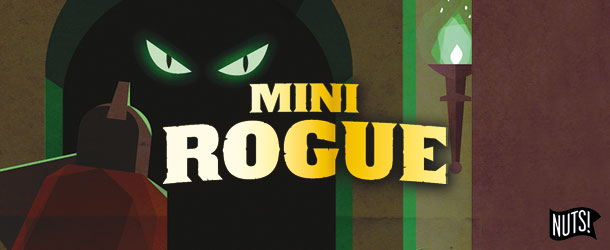
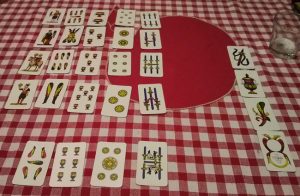
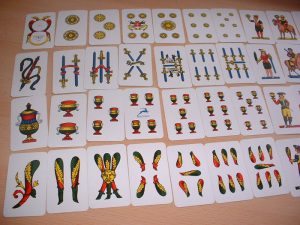
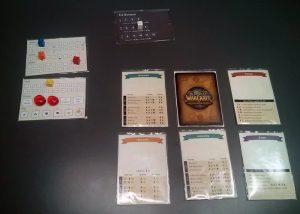
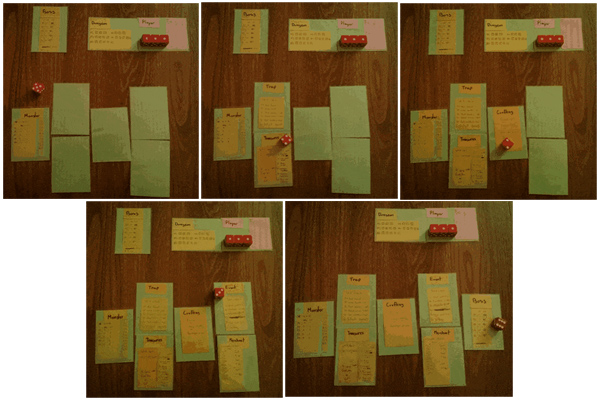



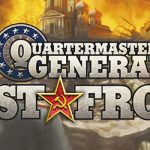




Follow Us on